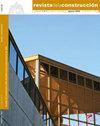Durability of concrete exposed to combined freeze-thaw, sulfate, and acid attacks after two years
IF 1.4
4区 工程技术
引用次数: 0
Abstract
This study investigated the frost resistance of concrete exposed to sulfate and acid attacks after two years. The cement content was selected as 300 kg/m3, 350 kg/m3, 400 kg/m3, 450 kg/m3, and 500 kg/m3 in this study. 100 mm cubic specimens were prepared for experiments. After the specimens were cured in the water at 20 ± 2 °C for 28 days, they were kept in the laboratory conditions at 20 ± 2 °C for 23 months+2 days. Then, these samples were subjected to freeze-thaw cycles after being exposed to 5% sodium sulfate, 5% magnesium sulfate, 1% sulfuric acid, and 2% sulfuric acid for four days. Thus, the samples were exposed to the four different combined attacks. Lastly, the mechanical properties, weight change, and relative dynamic modulus of elasticity of these specimens were determined. Furthermore, the SEM and EDS analyses were carried out on samples. This study found that the highest compressive strength, the highest ultrasonic pulse velocity, and the lowest weight loss were the samples with 500 kg/m3 cement content subjected to combined freeze-thaw and 1% acid attack.混凝土在冻融、硫酸盐和酸的共同作用下暴露两年后的耐久性
本研究考察了混凝土在硫酸和酸侵蚀下的抗冻性能。本研究水泥掺量分别为300 kg/m3、350 kg/m3、400 kg/m3、450 kg/m3、500 kg/m3。制备100个 mm立方试样进行实验。标本在20 ± 2 °C的水中固化28 天后,在20 ± 2 °C的实验室条件下保存23 个月+2天。然后,在5%硫酸钠、5%硫酸镁、1%硫酸和2%硫酸中暴露4天后进行冻融循环。因此,这些样本暴露在四种不同的组合攻击中。最后,测定了试件的力学性能、重量变化和相对动弹性模量。并对样品进行了SEM和EDS分析。研究发现,当水泥掺量为500 kg/m3时,在冻融和1%酸侵蚀条件下,试样的抗压强度最高,超声脉冲速度最快,失重最小。
本文章由计算机程序翻译,如有差异,请以英文原文为准。
求助全文
约1分钟内获得全文
求助全文
来源期刊

Revista de la Construccion
工程技术-工程:土木
CiteScore
2.30
自引率
21.40%
发文量
0
期刊介绍:
The Journal of Construction is aimed at professionals, constructors, academics, researchers, companies, architects, engineers, and anyone who wishes to expand and update their knowledge about construction. We therefore invite all researchers, academics, and professionals to send their contributions for assessment and possible publication in this journal. The publications are free of publication charges.
OBJECTIVES
The objectives of the Journal of Construction are:
1. To disseminate new knowledge in all areas related to construction (Building, Civil Works, Materials, Business, Education, etc.).
2. To provide professionals in the area with material for discussion to refresh and update their knowledge.
3. To disseminate new applied technologies in construction nationally and internationally.
4. To provide national and foreign academics with an internationally endorsed medium in which to share their knowledge and debate the topics raised.
 求助内容:
求助内容: 应助结果提醒方式:
应助结果提醒方式:


